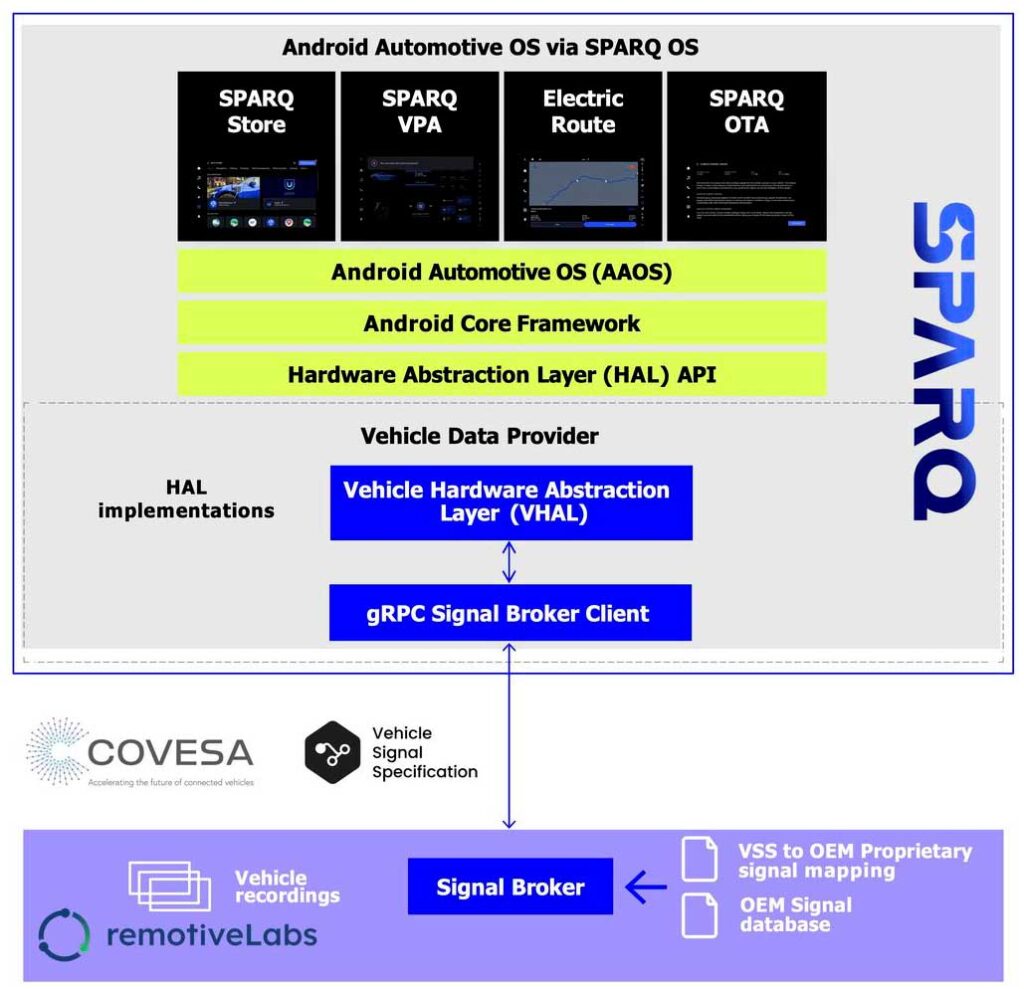P3 is using RemotiveLabs tooling for development and debugging of their Android Automotive based system SPARQ OS. The RemotiveLabs integration allows seamless access to vehicle data via Ethernet/Cloud for real-time diagnostics and debugging capabilities.
P3, with their SPARQ OS, is at the forefront of automotive infotainment technology. As an adopter of RemotiveLabs, they are further enabled in development and debugging software on Android Automotive OS (AAOS), utilizing RemotiveCloud communication and integration at the Vehicle Hardware Abstraction Layer (VHAL) level.
When an issue is detected in a vehicle, the RemotiveBroker records all signals in the vehicle for 2 minutes before and after the issue occurred. The recording is uploaded to the RemotiveLabs cloud with a description of the issue. AAOS engineers can replay the recorded drive cycle from the cloud into SPARQ OS development stack, through the VHAL. I.e. this brings the ability to easily check whether the correct signals are on the buses, have the right frequency, that the GPS had coverage and if the issue is in the application or somewhere else.

P3 is known for pushing the boundaries of technology and constantly improving their innovation capabilities. By integrating RemotiveLabs tooling and Profilence quality assurance, their development capabilities are further enhanced.
Read more about SPARQ OS and parent company P3 on respective websites.